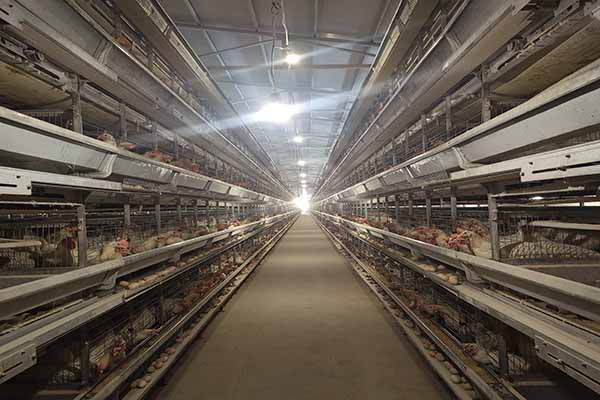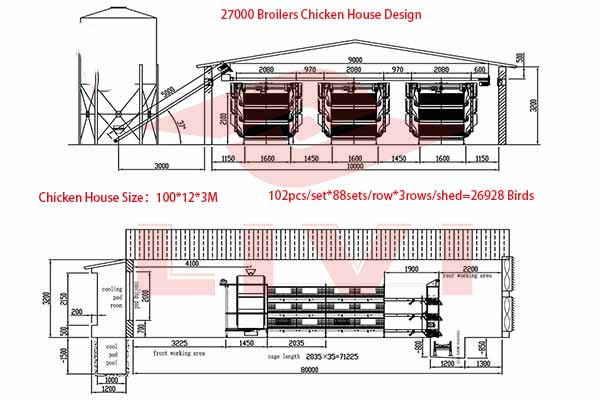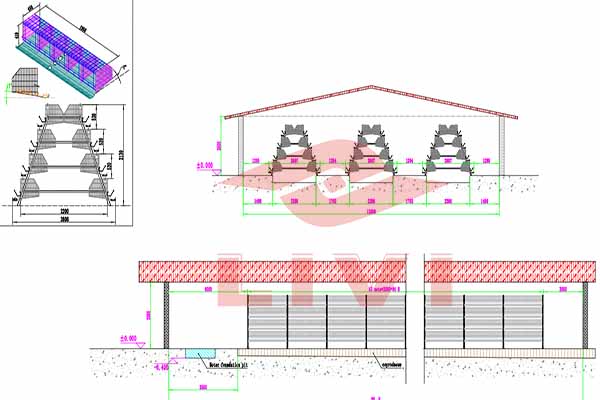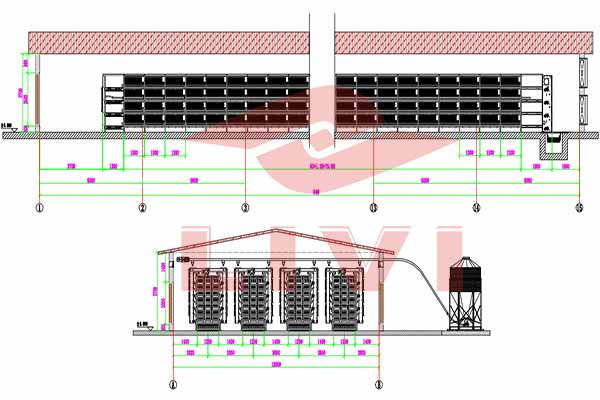Optimizing Chicken Battery Cage Systems for 30,000 Chickens in Kenya
Understanding the Chicken Battery Cage System
The chicken battery cage system is a highly efficient method for commercial poultry farming. It provides a controlled environment for the chickens, ensuring their health and well-being while maximizing productivity. This system is especially crucial for large-scale operations like those in Kenya, where managing 30,000 chickens requires advanced technology and careful planning.
Key Components of the Chicken Battery Cage System
The system typically includes the following components:
– Cages: These are the primary housing units for the chickens. Each cage is designed to accommodate a specific number of birds, often around 20-30 chickens.
– Ventilation: Proper ventilation is essential to maintain air quality and temperature, especially in large-scale operations.
– Feeding and Watering Systems: Automated feeding and watering systems ensure that the chickens receive adequate nutrition and hydration.
– Manure Management: Efficient manure removal systems are crucial for maintaining hygiene and reducing the risk of disease.
Designing a Chicken Battery Cage System for 30,000 Chickens
Designing a system for 30,000 chickens requires careful consideration of several factors:
– Space: Each chicken requires a certain amount of space. For example, 0.5 square meters per chicken is a common recommendation.
– Layout: The layout should allow for easy movement of personnel and equipment, as well as efficient waste management.
– Energy Efficiency: Consider using energy-efficient lighting and heating systems to reduce costs.
Benefits of Implementing a Chicken Battery Cage System
– Improved Productivity: The system allows for better control over the chickens’ environment, leading to higher productivity.
– Reduced Disease Risk: The controlled environment minimizes the risk of disease transmission.
– Cost-Effective: Although the initial investment may be high, the system can lead to significant cost savings in the long run.
Case Study: Chicken Battery Cage System for 30,000 Chickens in Kenya
A successful implementation of the chicken battery cage system in Kenya involved the following steps:
– Site Selection: A suitable location was chosen, ensuring access to water, electricity, and transportation.
– Design and Construction: The system was designed to accommodate 30,000 chickens, with careful attention to ventilation, feeding, and waste management.
– Training: Staff were trained on how to operate and maintain the system effectively.
Conclusion
Implementing a chicken battery cage system for 30,000 chickens in Kenya requires careful planning and investment. However, the benefits of improved productivity, reduced disease risk, and cost savings make it a worthwhile investment for poultry farmers and investors.
For more information and a free design and equipment quote, please contact us at Livi Machinery. We are committed to helping you optimize your chicken farming operation.





